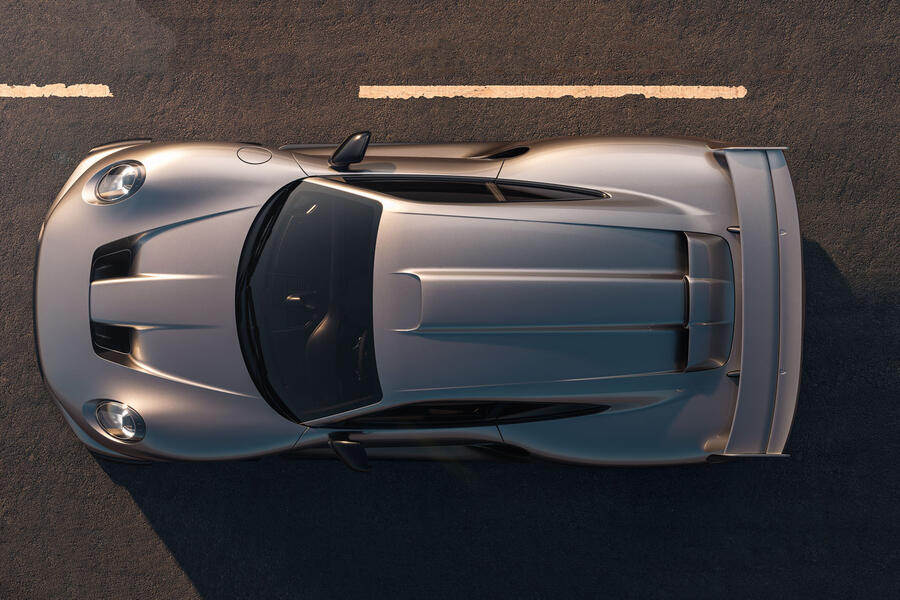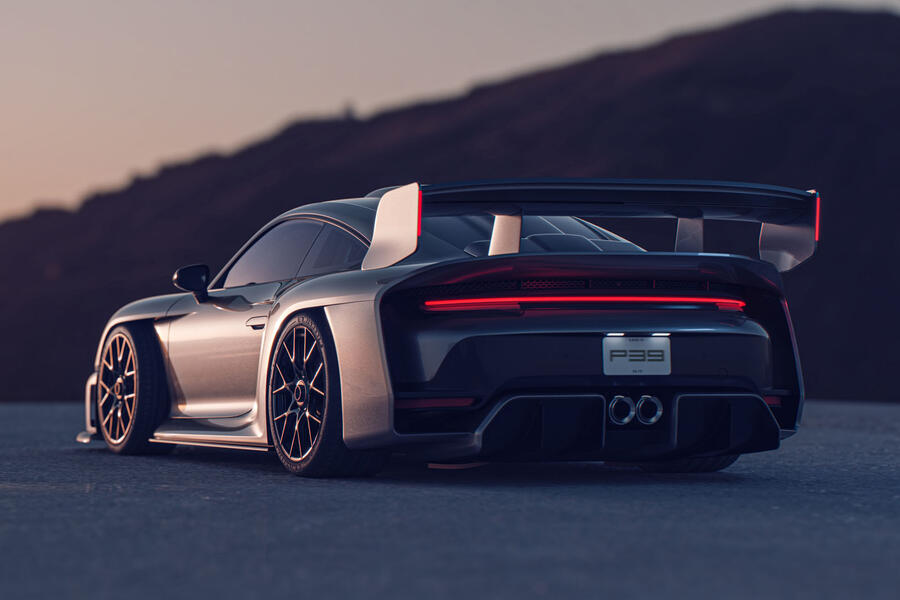This post was originally published on Autocar
P39 is RML’s take on what a Le Mans Hypercar would look like were it based on a road-going model
British firm marks 40 years with a Le Mans-style supercar that outpunches the 911 GT3 RS
The RML Group has unveiled the P39, a drastically overhauled Porsche 911 Turbo S that’s claimed to be capable of lapping the Nürburgring quicker than the 911 GT3 RS.
Inspired by the GT1 race cars of the mid-1990s, as well as the current crop of Le Mans Hypercars, it has received a radical makeover with an all-new carbonfibre body.
Its wheelbase has been extended by 25mm, contributing to an overall increase in length of 170mm and boosting stability at high speeds.
The front and rear tracks have been stretched by 100mm each to improve the car’s handling, although the body is only 90mm wider than that fitted to the 911 Turbo S.
RML has also fitted 20mm-wider tyres at either end to help the P39 put its extra power down.
The new body has been designed to maximise downforce, with bespoke active aerodynamics systems at either end. Up front is a splitter that extends itself by up to 75mm, netting a 13% increase in downforce at high speeds. The rear spoiler, meanwhile, can add up to 60% more downforce while at its most aggressive angle of attack. The two combine for a 35% overall increase in downforce, RML told Autocar.
There’s also a driver-activated system that adjusts the rear spoiler for a 56% reduction in drag, said to be worth an additional 10mph of top speed; and the suspension can be lowered to suck the car more closely to the road, for even more downforce.
In all, the changes net a total of 923kg of downforce at 177mph – an increase of 719kg compared with the 204kg produced by the 911 Turbo S at the same speed.

The 911 Turbo S’s twin-turbocharged 3.7-litre flat six has also been overhauled, gaining a new pair of turbochargers and revisions to the intercoolers, manifolds, catalytic converters and engine management system.
It produces 900bhp and 738lb ft (or 1000Nm) of torque – increases of 259bhp and 148lb ft over the 911 Turbo S.
Inside, the rear bench is replaced with a half roll cage and the front seats are replaced with new items of RML’s design fitted with four-point safety harnesses.
RML claims that, according to its simulations, the P39 will lap the Nürburgring Nordschleife in 6min 45sec – 4.3sec quicker than Porsche’s official time in the 911 GT3 RS.
Despite the extreme modifications made for the P39, RML said it has ensured the car remains driveable on the open road. It has a special Tour drive mode that increases the ride height and slackens the dampers, helping it to deal with obstacles such as potholes and speed bumps.
Indeed, RML chief Michael Mallock told Autocar that the company has had the P39 lapping the Nordschleife in the “low 30s” in simulations – putting it within touching distance of the 6min 29sec record recently set by the Mercedes-AMG One – but has intentionally dialled it back to avoid compromising its on-road driveability.

“That was getting a bit too racy as an overall vehicle,” said Mallock. “The main differentiator with this is the ability to be phenomenally quick around the Nordschleife but then to be able to drive back in something that feels more like a Turbo S than a GT3. It’s still got that road usability and comfort.”
Mallock added that RML isn’t “chasing records”, but if a customer did want to push a bit further, he would “probably ring [his] mate Peter Dumbreck” – who seven years ago broke the Nordschleife record with a 6min 45.9sec lap in the Nio EP9 electric hypercar.
RML will build 10 examples of the P39 40th Special Edition (named in reference to the company’s ongoing 40th anniversary celebrations) at a cost of £495,000 each, excluding VAT and the donor car.
Each ’40SE’ is finished in RML’s signature ruby-red colour and fitted with bespoke forged alloy wheels measuring 20in up front and 21in at the rear.
The first will be complete in March, before it heads to set a lap at the Nordschleife in the summer.
It will be followed by a run of slightly less extreme versions of the P39, albeit still with the same chassis and aero tweaks.
